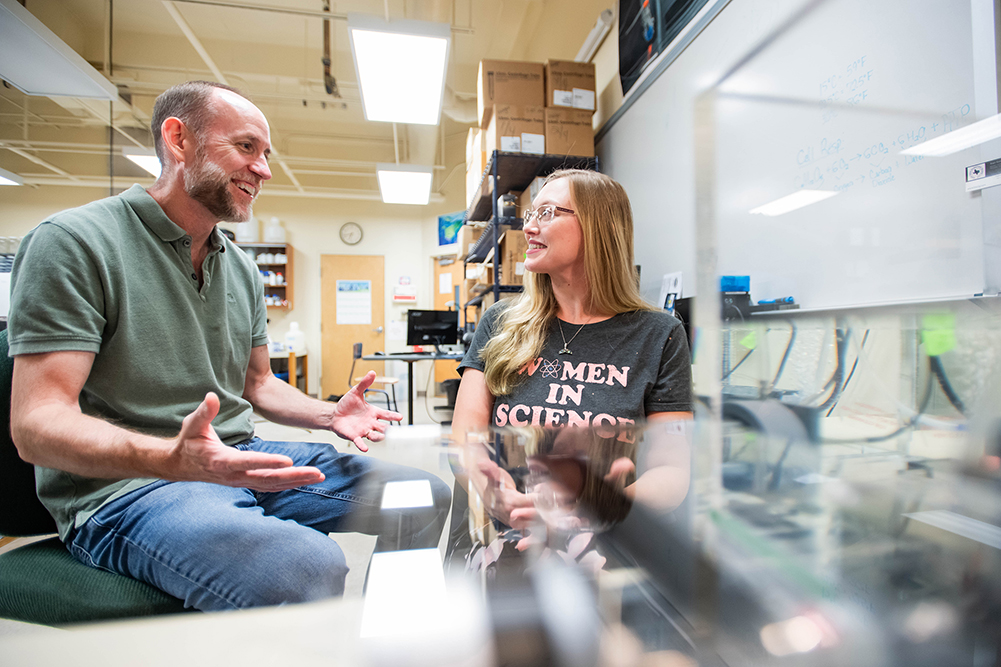
Road construction is a common temporary inconvenience for Texas commuters, but when those roads cross streams or other waterways, they can have adverse long-term impacts on the travel patterns of aquatic wildlife.
When culverts restrict a waterway’s flow, they increase the rate of the flow of water at the point of the crossing. If certain species of fish aren’t capable of swimming fast enough to pass through the restricted point of the waterway, it can limit their distribution and potentially affect the number of fish in the population.
That’s why University of North Texas biology professor Ed Mager is conducting research in collaboration with the Texas Department of Transportation and the Texas Parks and Wildlife Department to analyze whether stream crossings need to be re-engineered to accommodate the movement patterns of aquatic life.
Mager’s team is examining the swim speed of seven species of native Texas fish, three of which have been designated as Species of Greatest Conservation Need (SGCN) by Texas Parks and Wildlife. “They’re not formally listed as endangered, but if their populations continue to decline, they could be imperiled,” Mager says.
The other species of fish they’re studying serve as hosts for larval mussels that have been designated as SGCN. “The mussels themselves provide important ecosystem services to humans in the form of cycling nutrients, filtering the water and stabilizing the substrate within the river,” Mager says.
The data is collected by placing specimens in a swim tunnel respirometer — think of it as a treadmill for fish. The clear tube uses a propeller to circulate water through it at various speeds. Mager’s team uses this to assess the fish’s maximum sustained swimming speed. They test at least eight fish of each species at three different temperatures to account for the impact of seasonal changes.
“There are several ways that this type of information can be and has been used to facilitate fish passage by designing road-stream crossings so that water velocities don’t exceed the swimming capability of the fish species in question,” says Texas Parks and Wildlife fisheries research scientist Preston Bean.
“It’s important to think through these kinds of problems because if you don’t, they can have unintended impacts on the biodiversity of the region. That doesn’t just affect the conservation of a fish species, it can have major ramifications for people as well.”
Ed Mager, UNT professor of biology
“Increasing the size or number of culverts to reduce velocities in each culvert is one approach. Reducing the slope of the culvert or installing baffles to provide refugia from high water velocities within a culvert also are ways to ensure that fish can move upstream past road-stream crossings or other structures that might impact fish passage.”
Some of the species of fish studied so far include the Texas Shiner and Blacktail Shiner. Bean says the data has already influenced culvert designs on projects in Kerr County in the Guadalupe River Basin.
“It’s important to think through these kinds of problems because if you don’t, they can have unintended impacts on the biodiversity of the region,” Mager says. “That doesn’t just affect the conservation of a fish species, it can have major ramifications for people as well.”